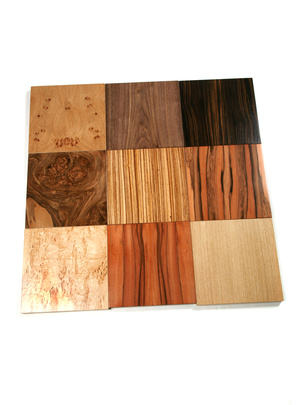You’ve no doubt seen the advert for a furniture company that boasts there is ‘no veneer in ‘ere’. According to them, veneers are a negative thing, and solid wood is the way to go. We’re not quite sure why this company has taken such a hard line on veneers, after all, they produce an incredibly attractive finish that is regularly used in luxury and high end venues, buildings and homes across the UK. And, more importantly, wood veneers are far more environmentally friendly than solid wood. In this post we discuss why you should be looking for a ‘veneer in ‘ere’, rather than the opposite.
Preserving the Rain Forests
The use of veneers results in a vastly reduced demand on solid wood and as such reduces the demand on natural wood resources. Deforestation is a major issue, yet some furniture makers would have you believe that solid wood is the best option.
Veneered furniture is absolutely not inferior to solid wood furniture. Veneers are a logical choice for so many reasons, not least because they offer the beauty of a real wood finish, whilst using far less wood.
When timber is milled to produce veneers, waste is vastly reduced. Solid wood timber will generally be sawn into inch thick boards, and there is a great deal of the log that ends up as sawdust: in other words, totally wasted. Conversely, when cutting veneers, there is no waste. Thin sheets are sliced and several are produced from a single log. This significantly reduces the amount of wood needed to produce a piece of furniture, as well as reducing waste.
Longevity
Did you know that solid woods are prone to cracking and warping? You could well find that your solid wood furniture needs replacing fairly often, putting more pressure on resources. Plywood with a solid wood veneer finish on the other hand will not be subject to the same issues, plus the use of materials like plywood does not put such pressure on resources as they are taken from lower quality trees where the remainder are able to grow faster because the competition for nutrients and light is reduced.
Choice
Wood veneers offer the opportunity to own furniture that is finished in striking timbers that would otherwise be out of reach. Exotic species are exceptionally attractive and when wood is sliced using the veneer cutting techniques, it gives way to amazing patterns, particularly with certain species like walnut which has knots and burls. When cutting veneers it is possible to produce a variety of contrasting shades, grains and effects which can be exceptionally eye-catching.

Beauty
Solid wood has the tendency to expand in warmer weather and contract in colder temperatures. If you tried to apply intricate designs to solid wood then it would be impossible to maintain them as the seams would open in the cold and swell up in the warmer weather leading to buckling. The beautiful cross-grain effects you can achieve with veneers together with charming burls are impossible to replicate in solid wood.

In summary, decorative wood veneers are a renewable resource and are a kind and environmentally friendly way to use timber in comparison to solid wood. The natural wood veneer industry is able to demonstrate the preservation of timber as a valued resource in many ways.
So when you next hear, ‘there’s no veneer in ‘ere’ – think about why that’s a negative thing rather than a positive.


